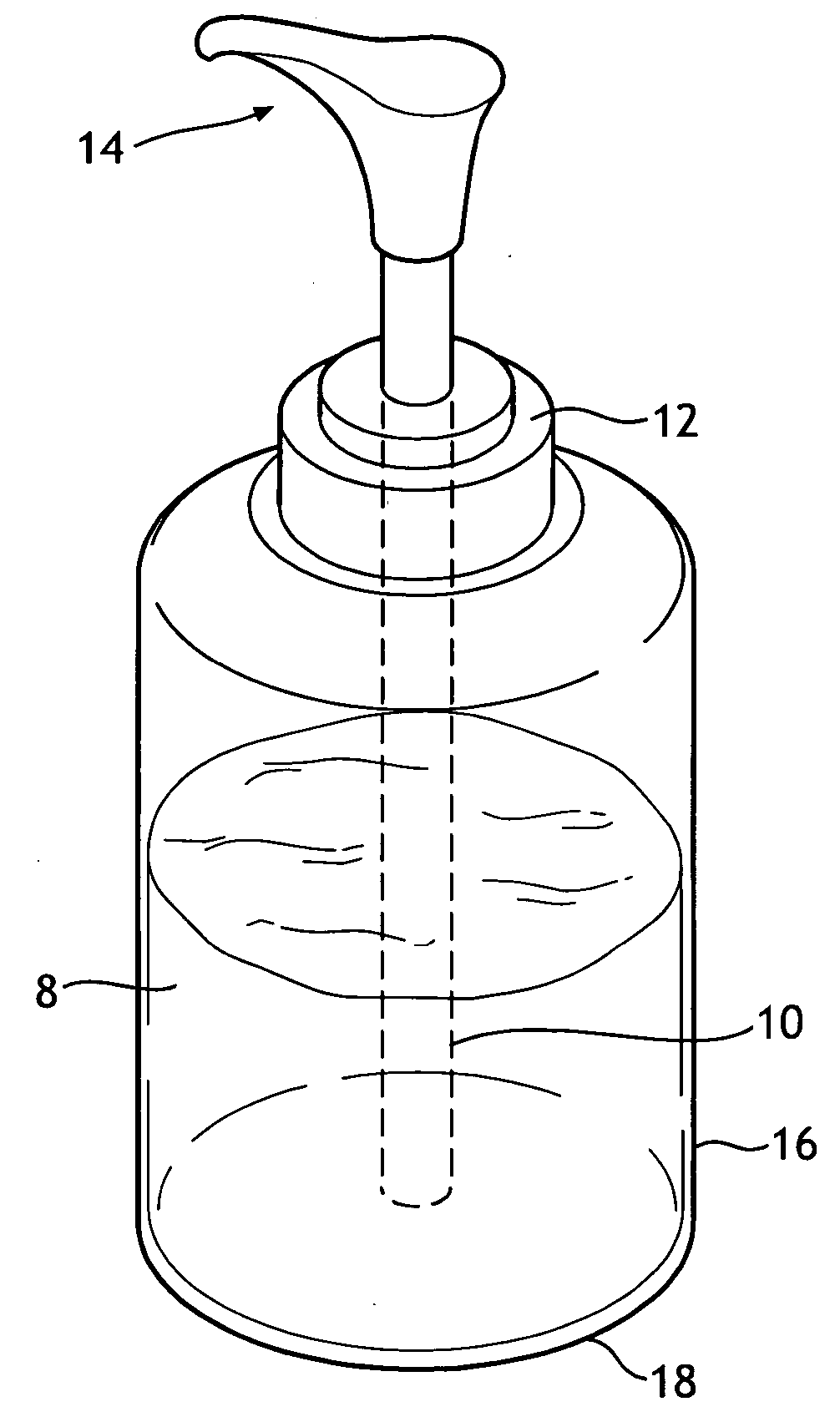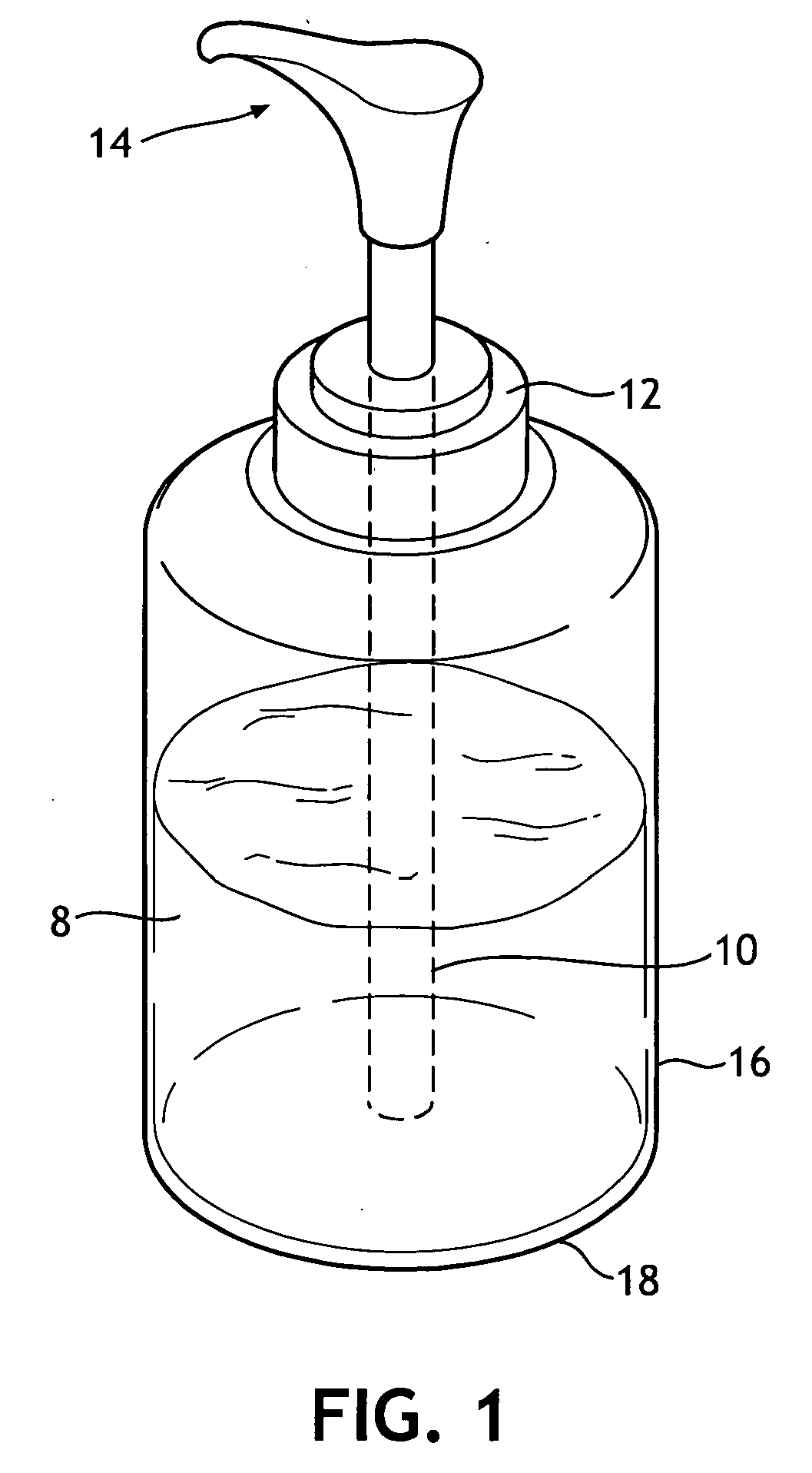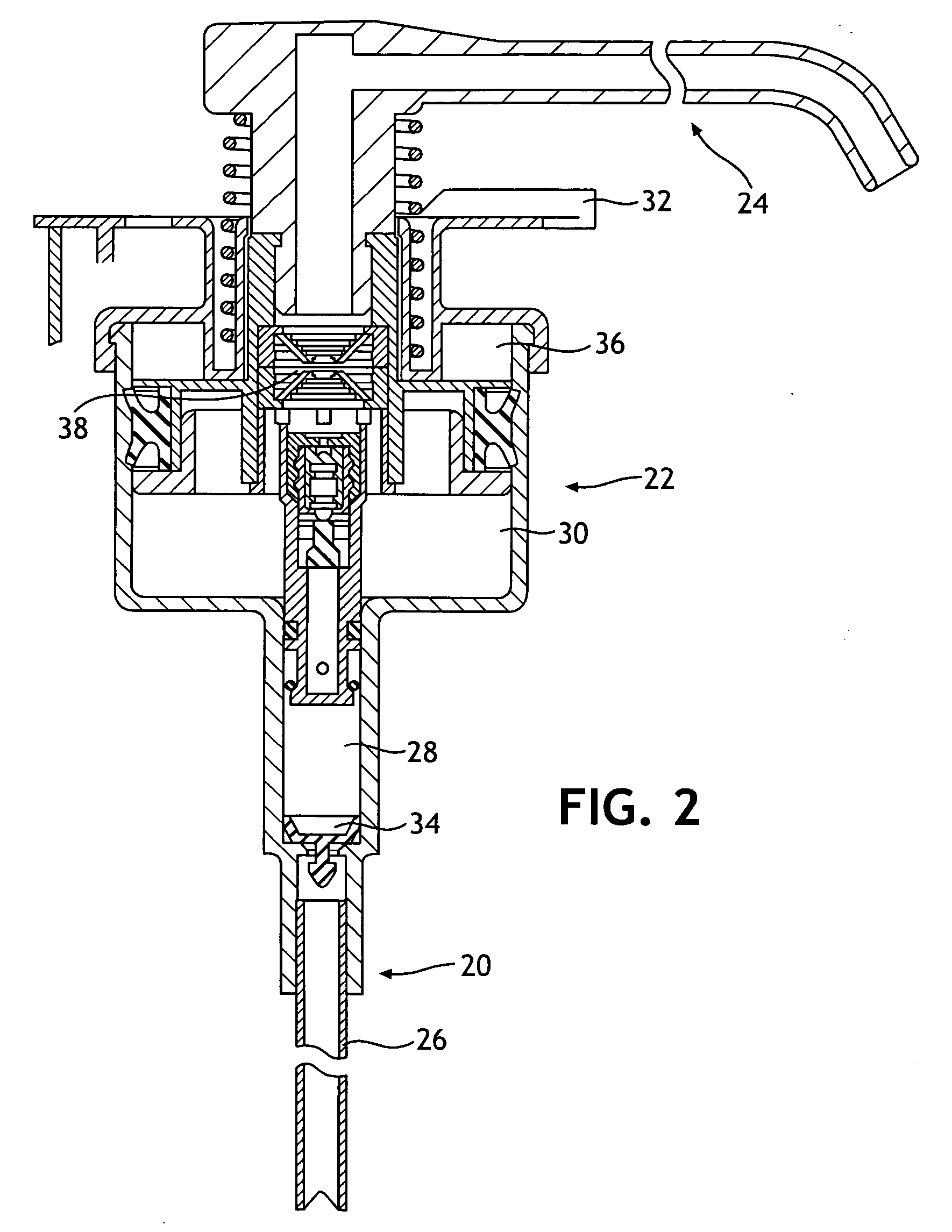Single phase color change agents
a color change agent and single phase technology, applied in the field of single phase color change agents, can solve the problems of impracticality and high cost of methods, though possibl
- Summary
- Abstract
- Description
- Claims
- Application Information
AI Technical Summary
Benefits of technology
Problems solved by technology
Method used
Image
Examples
example 1a
Redox Dye / Reducing Agent Producing Color Change
The formulation used was: 200 grams of Kimberly-Clark Professional antibacterial Clear Skin Cleanser (PCSC C2001-1824), 0.01 gram of Food Blue No.2 dye and 1.2 grams of glucose sugar. In weight percentage this was 0.005 weight percent dye and 0.6 weight percent sugar and the balance soap. The mixture was stirred at ambient temperature for 20 minutes to dissolve additives and then poured into a dispenser container. On standing, the color turned a pale yellow color.
In this example, Indigo Carmine (Food Blue No.2, FD&C No. 1) dye, normally blue / green in color, when mixed into a glucose / liquid soap solution, was reduced by the glucose to a pale yellow color. On exposure of the soap mixture to the air and with rubbing on the hands, oxygen oxidized the dye back to the green / blue color in about 10 to 20 seconds. Interestingly, there is not enough oxygen in the soap while sealed in a container to oxidize the reduced dye, thereby allowing it...
example 2
pH Change Producing Color Change
The formulation used was: 76 grams of Kimberly-Clark Professional antibacterial Clear Skin Cleanser (PCSC C2001-1824), 1 gram of glucose oxidase enzyme catalyst and a trace amount of chlorophenol red (the initial mixture), followed by the addition of 6.4 milligrams of glucose sugar to 4.7 grams of the initial mixture. The initial mixture remained red upon mixing and after the addition of the glucose (the final mixture). The final mixture was placed on a tile and spread manually, resulting in a gradual color change to yellow in about 20 seconds.
This example of pH change producing a color change is the addition of a glucose enzyme catalyst and chlorophenol red to a soap solution. After mixing, glucose, having a redox potential of −0.42v, was added and the color (red) did not change. Upon agitation in air on a surface, however, sufficient oxygen was introduced to react the glucose, in the presence of the catalyst, to gluconic acid and so reduce the p...
example 3
Redox Dye / Reducing Agent Producing Color Change Using Cysteine / Ascorbic Acid
Reagent stock solutions were made having the following compositions:
2.0 grams of Indigo Carmine (Food Blue 1, FD&C Blue 2) redox dye dissolved in 1000 ml of tap water. Indigc Carmine dye is available from the Aldrich Chemical Company of Milwaukee Wis., catalog number 13,116-4.
10 weight percent L-ascorbic acid reducing agent in tap water. Ascorbic acid is available from the Aldrich Chemical Company, catalog number 25,556-4.
10 weight percent DL-cysteine reducing agent in tap water. Cysteine is available from the Aldrich Chemical Company, catalog number 86,167-7.
A series of water solutions were made with 1 ml of Indigo Carmine dye reagent stock solution and made up to 100 ml with tap water. Various amounts of the other two reagent stock solutions were added to this dye solution as shown below. After being shaken to initiate the color change, the compositions were then allowed to equilibrate and were t...
PUM
| Property | Measurement | Unit |
|---|---|---|
| weight percent | aaaaa | aaaaa |
| weight percent | aaaaa | aaaaa |
| weight percent | aaaaa | aaaaa |
Abstract
Description
Claims
Application Information
 Login to View More
Login to View More - R&D
- Intellectual Property
- Life Sciences
- Materials
- Tech Scout
- Unparalleled Data Quality
- Higher Quality Content
- 60% Fewer Hallucinations
Browse by: Latest US Patents, China's latest patents, Technical Efficacy Thesaurus, Application Domain, Technology Topic, Popular Technical Reports.
© 2025 PatSnap. All rights reserved.Legal|Privacy policy|Modern Slavery Act Transparency Statement|Sitemap|About US| Contact US: help@patsnap.com



